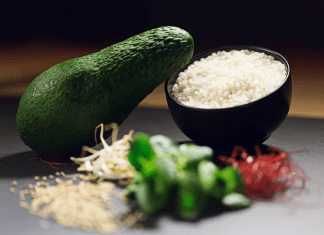Origins of Himalayan Pink Salt
Himalayan Pink Salt is mined from the Salt Mine in Pakistan. That mine lies at the foothills of the Punjab region's Salt Range. It is said to have been created about 250 million years ago as ancient seas evaporated in the area, leaving behind voluminous deposits of minerals and salt. Through the moving of tectonic plates, eventually, it shaped out the Himalayas. Locking these salt deposits into this earth to keep it protected in its pristine mineral environment within its container. Himalayan pink salt is not like every other salt. The purification process is not the method used in producing it today. It contains the most natural mineral content; for this reason, Himalayan salt has a distinctive pink hue characteristic of iron, potassium, calcium, and magnesium – beautiful and good for one's body.
The Mining Process of Himalayan Salt
The story of Himalayan Pink Salt begins when you read about the Khewra Salt Mine, which is the oldest and second-largest salt mine in the world. The mining process has remained traditional and simple, extracting large blocks of salt with manual tools, which does not allow any contamination with industrial materials and therefore ensures the purity of the salt. After extraction, the salt is handpicked and sorted by color, clarity, and size. Pure high-quality salt is white in color and deep pink and is ground into fine grades for cooking or large-sized grades for spas and decorating purposes.
The Himalayan salt mine of Khewra produces around 400,000 tons of this salt every year. Considering the mineral-rich deposits located inside the mine, there will be no scarcity in this salt for thousands of years.
From Caves to Kitchens: Culinary Uses of Salt Cooking Block and Slab
One of the most common applications of Himalayan salt is in the kitchen, and it remains to be a favorite for both professional chefs and home cooks. The distinctive taste and mineral composition make it an excellent alternative to regular table salt. Here are some of the culinary uses of pink salt:
Flavor-potentiating and Improving Agents
Himalayan Pink Salt is famous for its ability to highlight the flavor of food but never overpower it. It's a natural salt that can add flavor to dishes such as beef, green beans, salads, and baked goods, while iodized table salt is known to leave behind a bitter aftertaste
Salt Cooking Block and Salt Cooking Slab
Another very interesting application of Himalayan Pink Salt is the salt cooking block or salt cooking slab. These large blocks of salt can be heated or chilled, thus offering a cooking surface or a serving platter. When food is placed directly on top of the salt block, it absorbs a moist, mineral-rich flavor that elevates the dish. It's particularly great when grilling steaks, fish, or vegetables, but also for serving cold dishes, like sushi or desserts.
Food Preservation
Before the advent of refrigeration, salt was one of the most common preservatives, and Himalayan Pink Salt, with its pure mineral composition, is best for marinating and pickling. It inhibits bacterial growth, helps preserve flavor, and also keeps food's texture in place by absorbing moisture.
Discovering Himalayan Pink Salt for Gastronomical Delicacies
Himalayan Pink Salt has also been popular in gourmet food. Its mild flavor and bright color make it ideal for use in salt crusts, where it coats fish or meat to help retain moisture and add flavor. It is also used in retro candies and chocolates, where the saltiness adds a surprising depth to sweet treats.
Home Is Where Wellness Comes In: The Role of Himalayan Pink Salt in Decoration and Treatment
Rock Salt Lamps and Air Cleaners
Among the most popular non-culinary uses of Himalayan Pink Salt are Rock salt lamps. These lamps, made from large salt crystals, glow with a warm amber light when illuminated. Proponents claim that the negative ions emitted by the salt help purify the air by attracting dust and pollutants. Whether or not the scientific claims are proven, many people use rock salt lamps to create a calming atmosphere at home or in the workplace.
Halo Therapy and Respiratory Health
Himalayan Pink Salt is also a key component in halo therapy or salt therapy, which is gaining popularity for improving respiratory health. In salt rooms or caves, salt bricks line the walls and disperse tiny salt particles into the air, helping to clear airways, reduce inflammation, and alleviate symptoms of asthma, allergies, and bronchitis.
Bath Salts and Skin Treatments
Himalayan Pink Salt is commonly found in bath salts and skin care products due to its exfoliating properties and the essential minerals it provides to the skin. It helps remove dead skin cells, detoxify the body, and soothe conditions like eczema and psoriasis, offering both relaxation and therapeutic benefits.
Salt Walls and Wellness Rooms
Himalayan Pink Salt is also used to create salt walls and panels, which are increasingly common in spas, yoga studios, and meditation rooms. These salt features purify the air and provide a calming, therapeutic environment, thanks to both their appearance and health benefits.
Environmental Sustainability of Himalayan Pink Salt
Himalayan Pink Salt is not only revered for its health benefits but also for its sustainability. The mining process is relatively low-impact, with much of the work still done by hand, which minimizes environmental disruption and carbon emissions. Additionally, the salt is free from toxic additives, bleach, or other chemicals commonly found in processed salts, making it a healthier and eco-friendly choice for consumers.
Conclusion
Whether you are using Himalayan Pink Salt to enhance the flavor of your meals, improve air quality, or create a relaxing environment at home, it is a versatile and sustainable resource. Its natural purity, mineral content, and wide range of uses make it an invaluable product. The journey of Himalayan Pink Salt from its origins in the Khewra Salt Mine to kitchens, spas, and wellness centers around the world highlights its enduring relevance and value in contemporary life.






